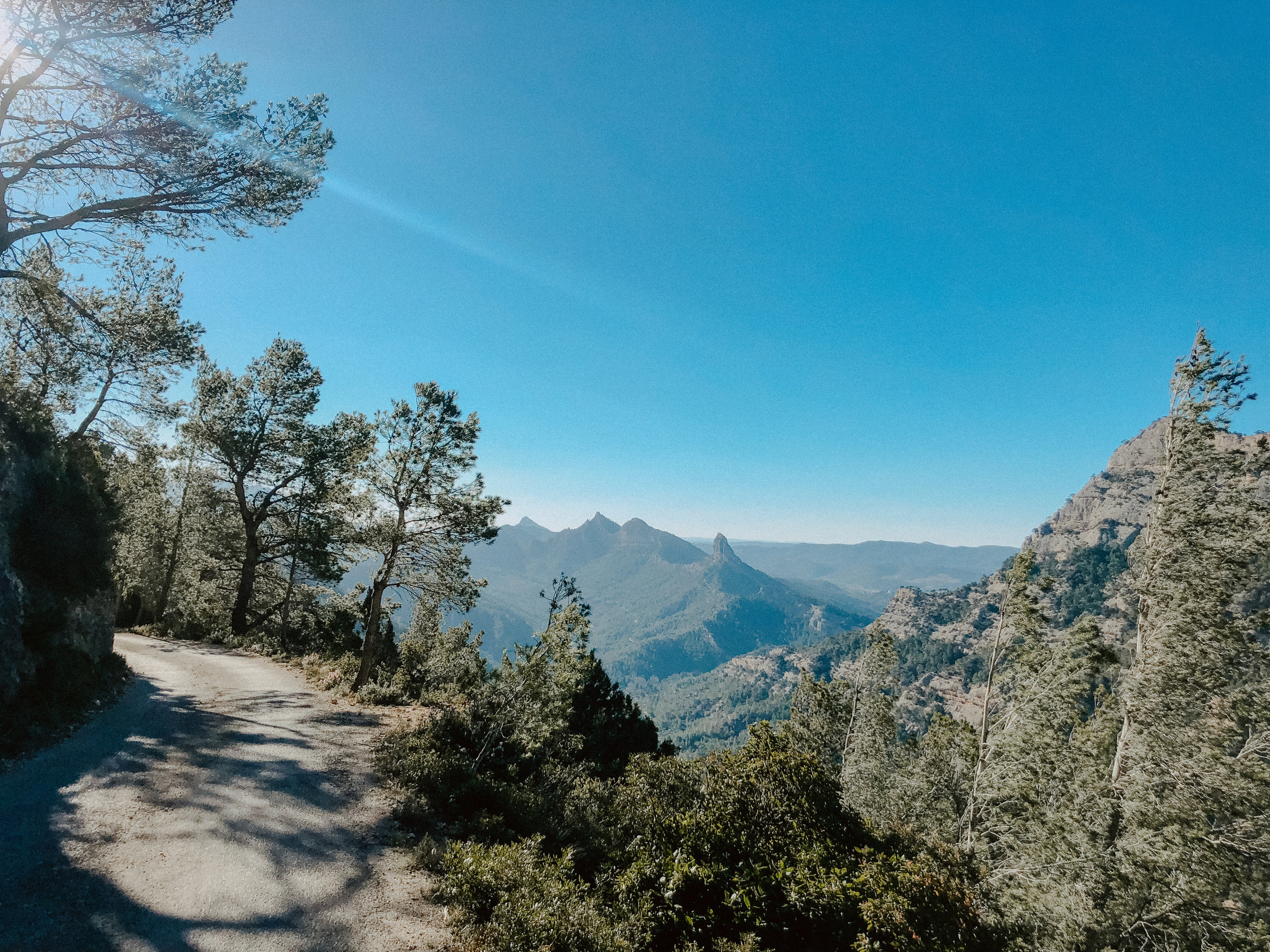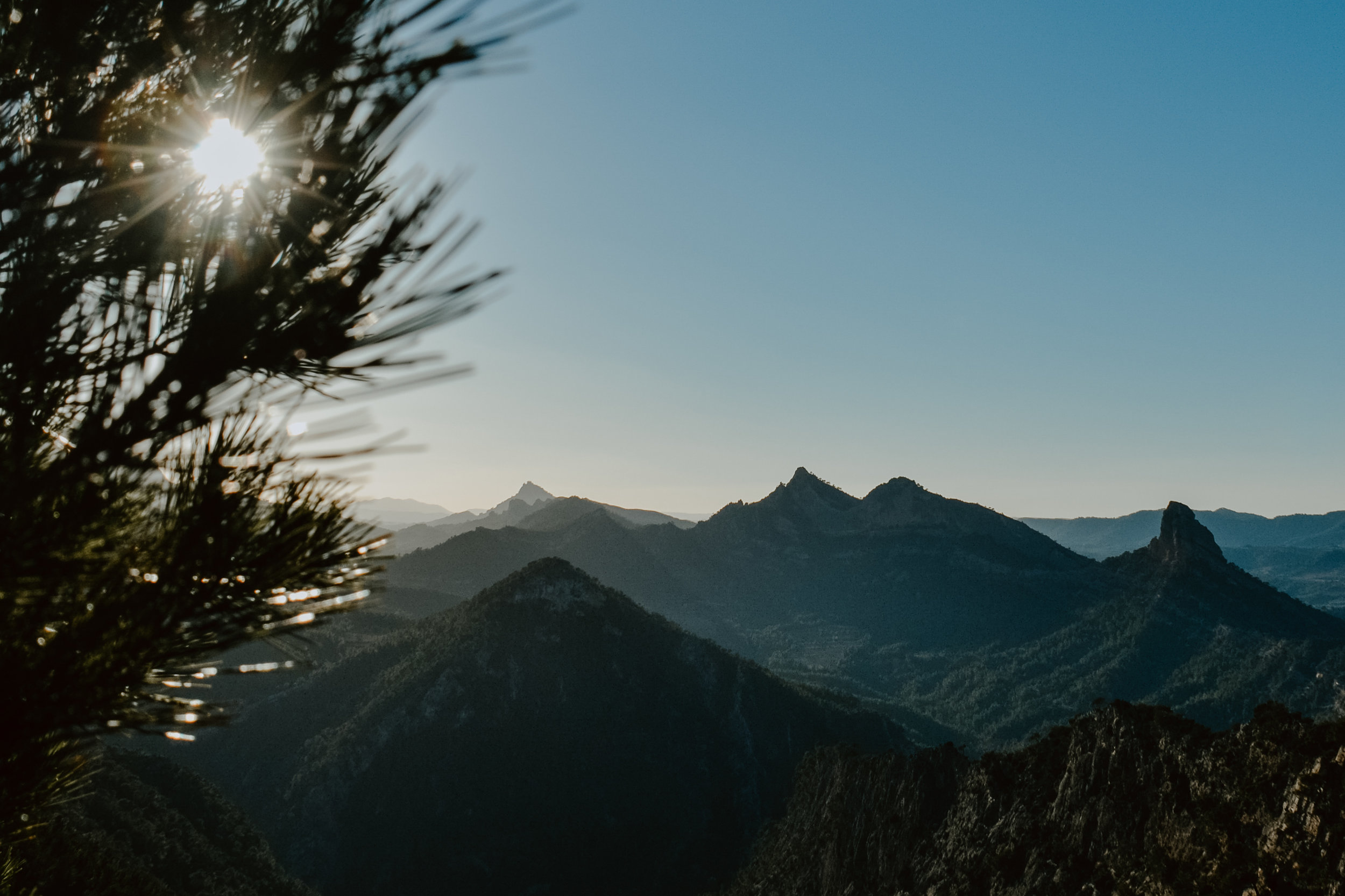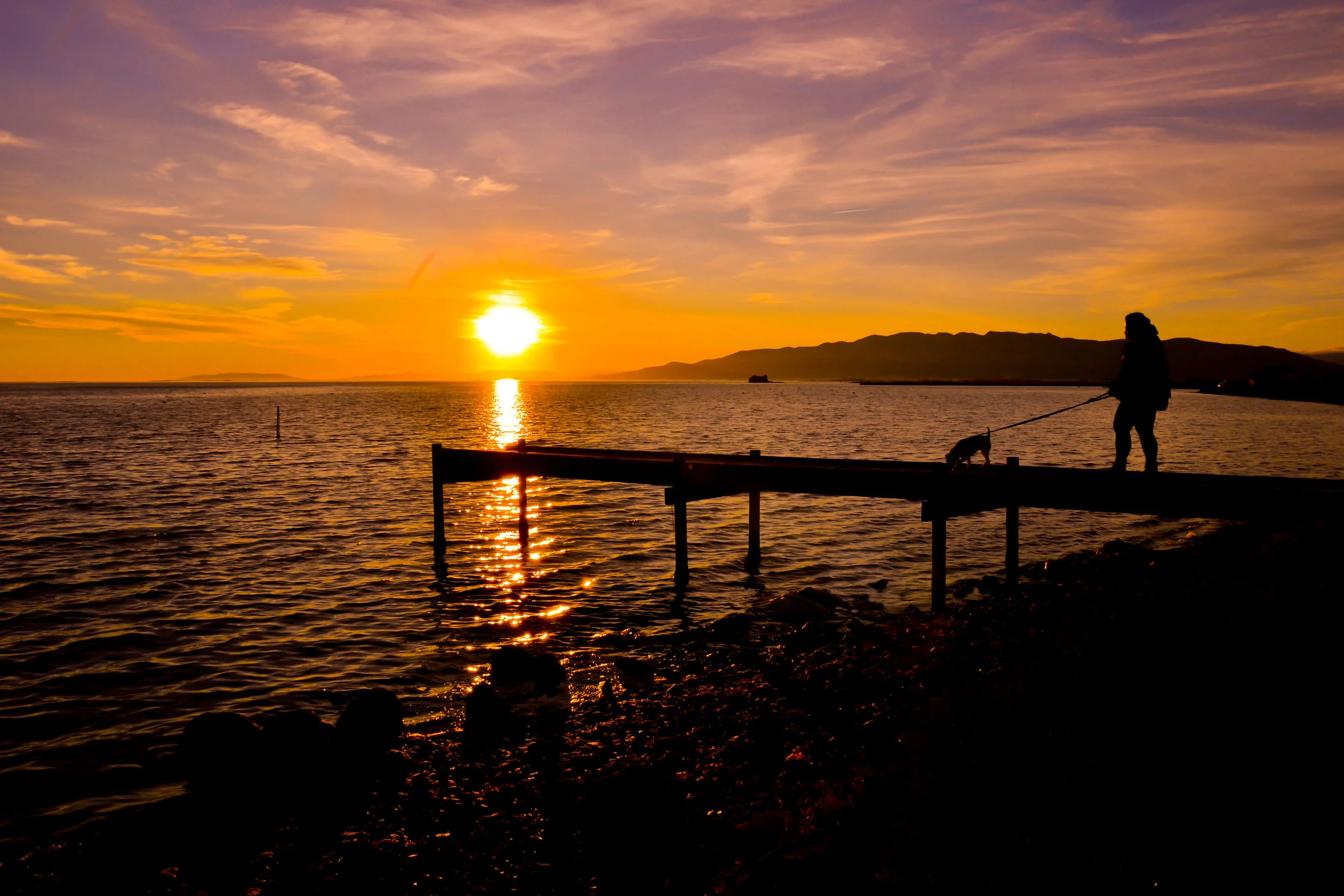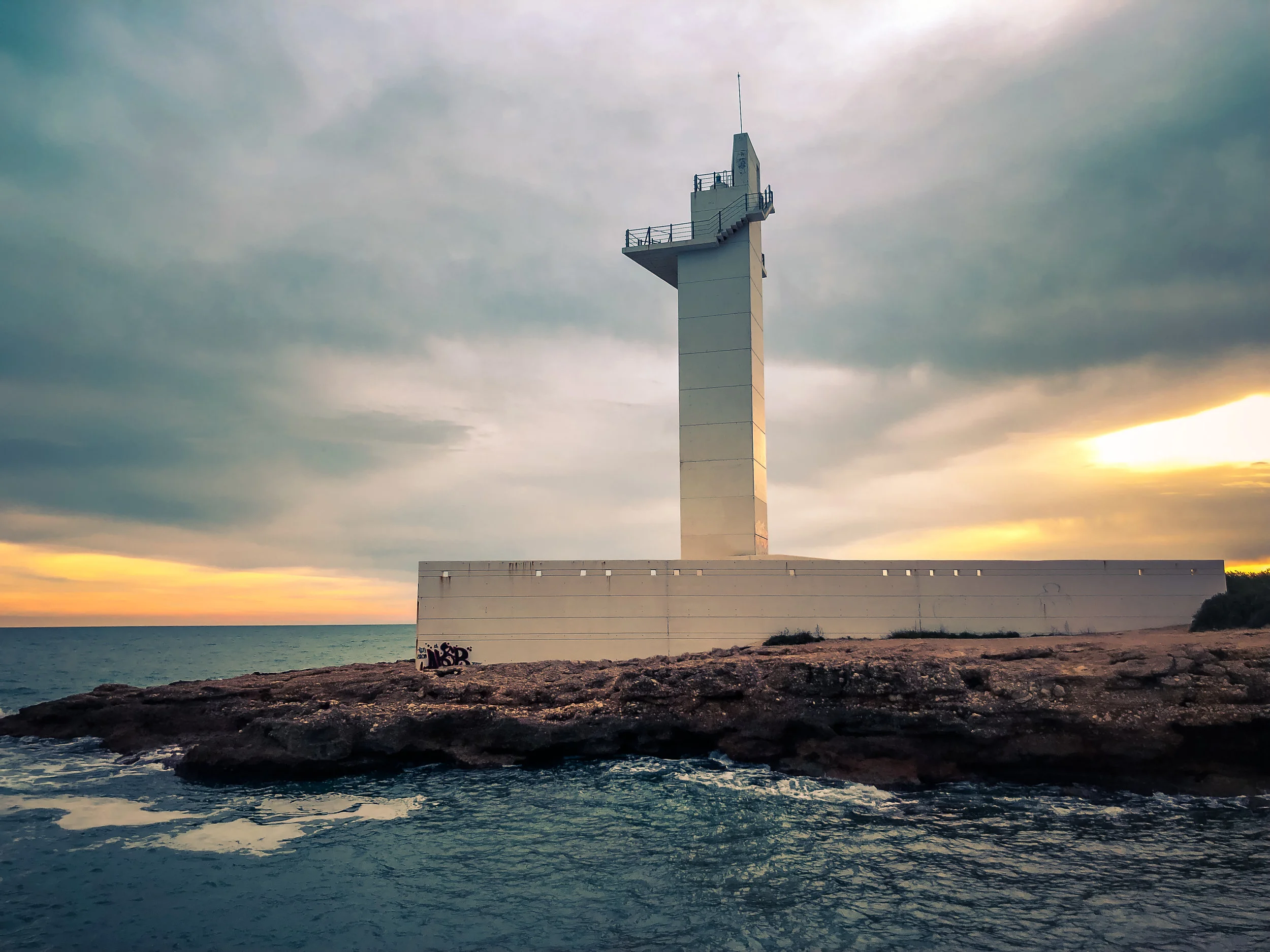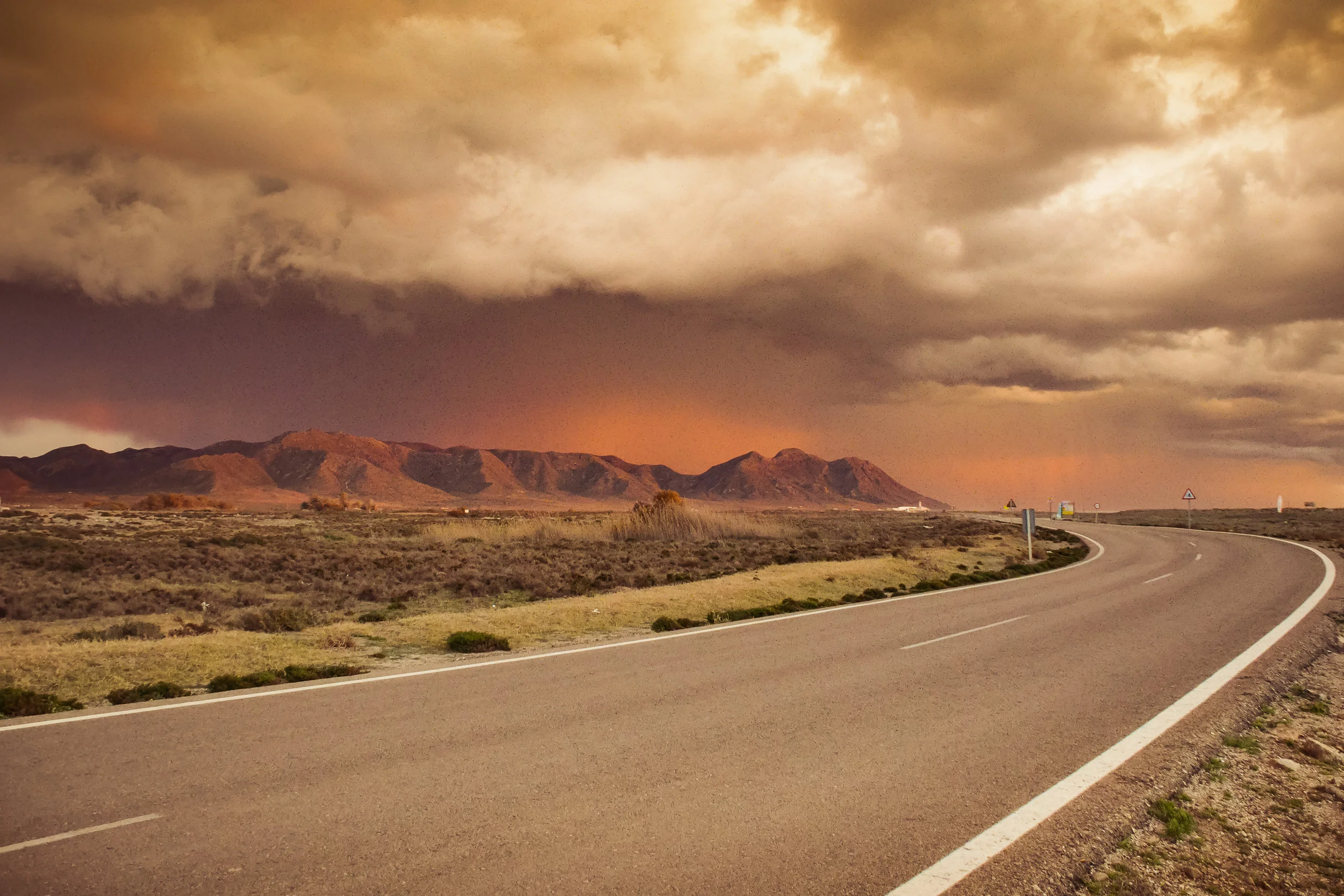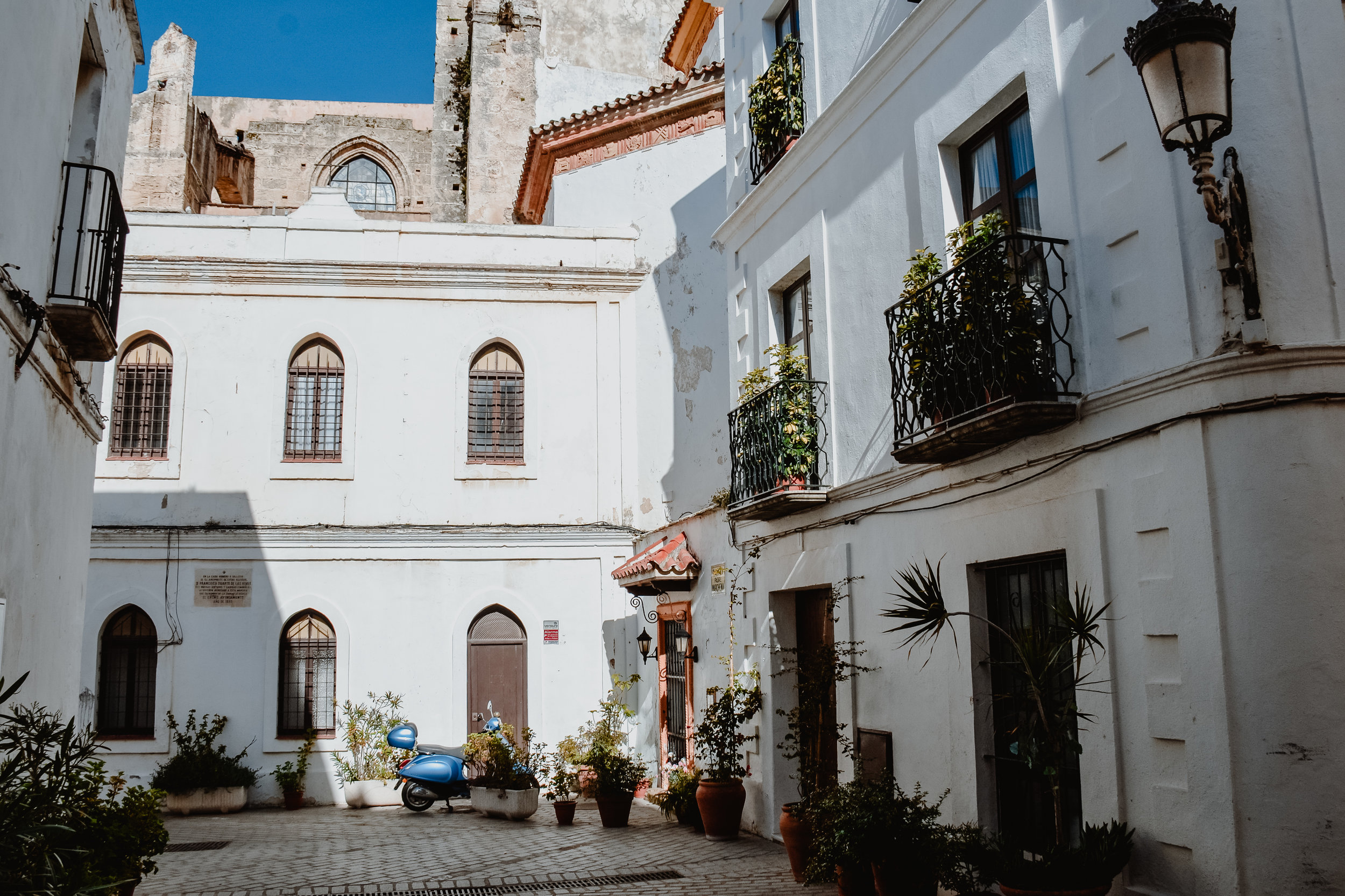How to travel Spain in a campervan with a dog: Part 1
After finding Dougie’s water bowl frozen after a particularly cold night in France, I packed up my campervan and rushed to Spain hoping for warmer weather.
Before I left I had done little research about where to go, so I did a call out on Instagram to get some suggestions. Unsurprisingly, the suggestions were mostly towns or cities and who can blame them; almost 9 million tourists visit the artistic metropolis of Barcelona and 7 million descend on the capital, Madrid, each year.
The thing is, when traveling alone in a campervan with a dog, towns and cities can be tricky. They are not impossible, but certainly more difficult. Where do you safely park the van? Where is dog-friendly? Where do you leave the dog when you want to pop into a museum?
I’m not one for leaving my furry companion behind so I like to go to places we can enjoy together. This meant I largely stuck to exploring Spain’s national parks. I was not disappointed.
Here is Part One of my travels through Spain. I plan on traveling the north of Spain in the Spring!
Entering Spain
I obsessed about the different ways of getting to Spain. For a moment I considered a ferry to Bilbao or Calais but the boat trips in Scotland earlier in the Autumn taught me neither Dougie or I travel well at sea.
As I wanted to keep the food in my stomach and Dougie’s stress levels to a minimum I decided to use the Eurotunnel. I booked an early morning shuttle, partly because it was cheaper but also because Dougie would be sleepy and more relaxed.
Check-in was seamless (if you’re British, you don’t have to do anything about your dog at this point but simply declare that he/she is with you) and 30 minutes later I was in France. I would highly recommend the Eurotunnel as the best way to travel with a pet.
There are three ways to enter Spain from France.
Entering Northern Spain via Bordeaux
Through the Pyrenees
Entering Southern Spain via Perpignan
As I travelled to Spain at the beginning of January with only summer tyres on the campervan, I didn’t fancy going through the heart of the Pyrenees. I also love red wine so a weekend break in Bordeaux didn’t sound like a bad idea, so I chose option one.
Despite being a toll road, the A63 is scenic once you hit the coast and the mountains of Spain. I kicked myself for not keeping track of how much the toll road was, but in total I spent about €40-50 on France’s roads.
Zarautz
I bypassed San Sebastian to stay at a great campsite, Gran Camping Zarautz, for a much needed shower and a night of electricity.
The views over Zarautz bay were amazing and beautiful coastal walks direct from the campsite meant I stayed there for a couple of days. The Pagoda Nature Reserve is just 15 minutes away too and it’s a stunning part of the world.
Sadly it was cold, wet and windy for most of our stay there. After a few days both Dougie and I had serious cabin fever so we headed further south.
The Bardenas Reales Natural Park
A mere 2 hours from the lush green coastal mountains of Zarautz is the Bardenas Reales, a desert region of Navarre, that can be easily missed on the map.
I had found the first 2-weeks travelling through France incredibly tough - the post-Christmas blues, the culture shock, and the cold - had made me pretty miserable and homesick, but seeing the red clay, orange sandstone and dusty white chalk as I drove into the Bardenas Reales made me feel light, new, and like I was finally…travelling. You know?
I arrived late in the afternoon so I drove straight to the tourist information centre to find out the best hikes and places to stay. As it was almost dusk I didn’t have time for a hike straight away, but you can drive (slowly) the unmade road through the park to the incredible Bardenas Castildetierra.
Being winter and almost dark I had the entire place to myself. I felt like the last woman on earth. As the sun set the sand turned to a hot golden amber.
It reminded me of a moment I had in Utah’s Monument Valley over 10 years ago where our Navajo guide played a tribal song on his flute while we watched the sunset turn the valley rocks red. I cried then and I cried again now, such was the beauty of the moment and this place.
The Bardenas Reales is a natural park so it is forbidden to wild camp. Certainly, the park is large and wild enough for you to disappear in, but the rules are there to protect the habitat.
Instead there is a free ‘aire’ just outside the park in the small village of, Arugedas. The park up is at the foot of old cave dwellings so while not in the park itself, it’s pretty damn cool to be near to the origins of off-the-grid, alternative living. There is also water and waste for €2, so WIN!
I woke up early and headed straight to the natural park to hike. In Scotland I had a nasty incident where my foot got caught in old fence wire. Hiking alone carries its risks so while I was physically unhurt, my pride and confidence had taken a knock. I hadn’t properly hiked since so after picking up some maps from the tourist information centre, I decided to follow the BMX routes to be safe.
In hindsight, I shouldn’t have been so worried about getting lost because the Bardenas Castildetierra rock is the perfect vocal point.
Centuries of wind and water erosion has created surprising shapes, canyons, plateaus, tabular structures and isolated hills, called cabezos, in the park.
I hadn’t hiked a terrain like it before. I felt like I was on a film set. The entire time I pretended I was a cowboy with Dougie as my trusty companion, looking out for a Native American ambush, or a Dothraki Queen leading her dragon army.
Little did I know at the time that the natural park had been used to film Dothraki scenes for Game of Thrones. Life is only downhill from here.
With it being winter and a desert it wasn’t long before a storm hit. The wind was fierce making it feel like -2 degrees at night and not much warmer during the day. I stuck it out for a couple of days but the lure of the coastal sunshine was too strong.
One thing I know for certain, I will be going back to Bardenas Reales. It was easily my favourite place in Spain.
Parc Natural dels Ports
I guess it was natural after being so cold for so long I became fixated on all things warm. I typed in ‘thermal springs’ into Google Maps and up popped La Fontcalda Hot Springs in Parc Natural dels Ports.
Peggy the van burst into life after I twisted the ignition key and pumped the accelerator a few times to heat her engine up, then we were off!
I didn’t give much thought about exactly where the springs were - in the very heart of the mountainous dels Ports - until the road began to narrow and climb steeply.
I paused at the top of the hill to a) give Peggy a rest and b) to take the view in.
There was no room to turn around so I put my Dora the Explorer hat on, took a deep breath, and plunged into the unknown.
The road into Fontcalda was the best and worst I have ever driven. It hugs the cliff face giving you two options; die by rock fall or die by sheer drop into the abyss.
The 20 hairpin turns (yes, 20, and the road is also on the ‘Dangerous Roads’ list) in a 30-year-old campervan with no power steering was a workout that Joe Wicks, the Body Coach, would be proud of.
My back was dripping with sweat and my arms ached with the effort, but the views were spellbinding.
Besides, it would all be totally worth it when I get to the hot springs, right?
Yes and no… I can imagine in the summer the tiny village of Fontcalda with its church, cafe and medicinal waters would be alive with families and couples all wanting to have a good time. Instead, I found the place to be locked up, closed, deserted and eerie.
I had planned to spend the night by the springs so I walked around with Dougie for a bit to see if the feeling of trepidation passed. There was no one else around, which could have added to the creepiness, but I usually find solace comforting.
We paddled our feet in the clean, warm water then walked up to the abandoned train tracks that only served to deepen my feelings of dread.
My number one rule of travelling alone is always to trust my gut. Even when logic is telling me that it is alright, that no one is here, that nothing bad can happen, I stick to what my gut says. My gut was telling me to get the hell out.
It could have been the isolation of being in a deep, but exquisite gorge completely cut off from the world. It could have been the 14th century monk sanctuary that I’m sure harbours a few secrets. It could have simply been the adrenalin left over from driving that road.
I didn’t much care. I got back in Peggy and drove back up the 20-hairpin-turns-road-of-heaven-and-hell.
Later I learnt the area was the scene of one of the most violent and cruel episodes in the Spanish Civil War, the Battle of Ebro….
Parc Natural del Delta de l’Ebre
I didn’t think anything could top Bardenas Reales Natural Park but, Delta de l’Ebre can give it a run for its money.
The park is the largest wetlands reserve in Catalonia making it one of the least built up areas along Southern Spain’s coastline.
It is a hard place to describe. It has large, flat rice fields that are framed by the mountains inland, lakes decorated by hundreds of pink flamingos, and white, sandy beaches that stretch as far as the eye can see. In one word it is, peaceful.
Head to Eucalyptus Beach, a 6km stretch of lush white sand, backed by dunes. If you’re brave you can drive straight onto the beach itself, or if you are like me keep to the safety of the car park then run like a mad woman with your dog nipping at your ankles onto the beach and into the glorious sea.
Then prepare yourself for the most spectacular sunset at Les Madalenes.
My top tip for the Parc Natural del Delta de l’Ebre is to relish in the tranquility and slow pace of the area. Read, walk, sleep, play on the beach, and enjoy watching the flamingos do their thing.
Parque Natural Sierra de Irta
I stayed the Campsite Ribamar in the heart of this natural park for a whole week I loved it that much.
In fact, this is the nicest campsite I have ever stayed in. Reasonably priced, modern facilities, and lovely, lovely people. There are walks direct from the campsite towards the sea with its jurassic coastline, and walks that take you into the mountains.
Cabo de Gata Nature Reserve
Between the Parque Natural Sierra de Irta and heading towards Malaga I didn’t have the best time. The weather turned, ruling out Granada and Sierra Nevada, so I had little choice but to stick to the coast but I found this stretch of Southern Spain too built-up and touristy.
When I woke up at 1.30am to policeman arresting 4 men outside my van near Malaga, then search the surrounding bushes for 3 hours for drugs, I decided to hot foot it out of there.
There was one shining beacon of joy on that stretch of coast - Cabo de Gata. A beautiful coastal, mountainous region full of orange farms that is well worth a stop on the way to Tarifa.
Tarifa
I owe Tarifa my soul. I arrived tired, dejected, lonely and fed up. The day before I posted a message on Women with Campervans on Facebook to see if anyone was in the area. Turns out a really wicked woman in her caravan had been staying in Tarifa for awhile and knew all the best spots.
Fill up your water at Tarifuel in town, then head to either Playa de Los Lances Norte to watch the kite surfers or Punta Paloma for a beach park up and a van community like no other.
Do you have a favourite spot in Spain?

















